If you live in Central Illinois, you already know how unpredictable the weather can be. From freezing winters and spring downpours to hot, humid summers, our climate keeps builders on their toes. Add in the region’s unique soil conditions—ranging from fertile topsoil to clay-heavy sublayers—and you’ve got a set of challenges that directly affect how homes, barns, and commercial buildings are designed and built.
At Next-Gen Buildings LLC, we’ve seen these factors up close on projects in Sullivan, Effingham, Pana, Taylorville, Paris, Shelbyville, and Assumption. Understanding local weather and soil isn’t just helpful—it’s essential to building structures that last. Here’s how these forces shape construction in Central Illinois.
The Impact of Illinois Weather on Building
1. Cold Winters and Freeze-Thaw Cycles
Winter in Illinois brings freezing temperatures, snow, and ice. These conditions can cause soil to expand and contract, putting pressure on foundations. Builders must:
- Design foundations with proper depth to reach below the frost line.
- Use waterproofing and drainage systems to reduce freeze-thaw damage.
- Select materials like concrete mixes engineered for cold weather durability.
2. Heavy Rain and Spring Flooding
Spring rains often saturate the soil and create drainage problems. Without proper planning, basements can leak, and building sites can erode. Solutions include:
- Grading lots for proper runoff.
- Installing sump pumps and drain tiles.
- Using gutters and downspouts to direct water away from the foundation.
3. Hot, Humid Summers
High heat and humidity put stress on roofing, siding, and HVAC systems. Builders must:
- Choose energy-efficient insulation and windows to reduce cooling costs.
- Design ventilation systems to prevent moisture buildup.
- Select roofing materials that withstand sun exposure.
4. High Winds and Storms
Central Illinois is no stranger to severe thunderstorms and high winds. Construction must account for:
- Strong roof truss systems.
- Durable siding and roofing materials.
- Proper anchoring for barns, pole buildings, and outbuildings.
Soil Conditions in Central Illinois
1. Rich Topsoil
Illinois is known for its fertile soil, which is great for farming but not always ideal for construction. Deep topsoil can shift or compact, requiring:
- Proper site preparation and soil testing.
Removal or stabilization of soft layers before building.
2. Clay-Rich Subsoil
Many parts of Central Illinois have clay-heavy soil. Clay expands when wet and shrinks when dry, leading to foundation movement. Builders address this with:
- Deeper footings below clay layers.
- Reinforced concrete foundations.
- Drainage systems that prevent excessive water absorption.
3. Drainage Challenges
Flat landscapes often mean poor natural drainage. To prevent water problems, builders incorporate:
- Swales and grading around the home.
- French drains or drain tiles.
- Moisture barriers for basements and crawl spaces.
Why Local Expertise Matters
National builders often overlook these regional challenges, designing homes that may look nice on paper but fail in practice. Local builders like Next-Gen Buildings LLC understand how Central Illinois weather and soil affect construction, ensuring your home or barn is built to last.
We factor in:
- Frost line depths for foundations.
- Drainage solutions for wet seasons.
- Energy-efficient systems for temperature extremes.
Structural engineering for storms and winds.
Practical Design Tips for Central Illinois
If you’re planning a project in our region, consider these must-have features:
- Basement Waterproofing – Prevents leaks and damage during heavy rains.
- Proper Roof Pitch – Steeper slopes shed snow and rain more effectively.
- Durable Siding and Roofing – Metal, vinyl, or high-quality shingles handle the climate best.
- Covered Entries and Porches – Protect against snow and rain exposure.
- Energy-Efficient Insulation – Keeps homes comfortable in both winter and summer.
- Ventilation Systems – Reduces humidity and prevents mold growth.
Examples of Structures Built for Central Illinois
- Custom Homes – Designed with strong foundations, waterproofed basements, and energy-efficient systems.
- Barndominiums – Perfect for rural areas with flexible layouts and durable siding.
- Pole Barns – Built with engineered trusses and weather-resistant materials.
- Commercial Buildings – Designed to meet codes for wind and snow loads while keeping costs under control.
The Next-Gen Advantage
At Next-Gen Buildings LLC, our design/build process ensures these weather and soil factors are addressed from the start. We don’t just draw plans—we build with local expertise. That means:
- Accurate Bids – Accounting for soil preparation, drainage, and materials.
- Durable Materials – Selected for Illinois conditions.
- Peace of Mind – Knowing your project is engineered for longevity.
Start Building With Confidence
If you’re ready to build in Central Illinois, don’t settle for a one-size-fits-all approach. Choose a partner who understands the challenges of Illinois weather and soil conditions—and how to build around them.
📞 Call 217-205-6233
📧 Email sales@nextgenbuildingsil.com
📍 Visit us at 1176 County Road 1500n, Sullivan, IL 61951
🕒 Hours: 7:30–5:30 Monday, Tuesday, Thursday, Friday | 10–6 Wednesday
At Next-Gen, we don’t just build structures—we build homes, barns, and businesses designed to thrive in Central Illinois.
